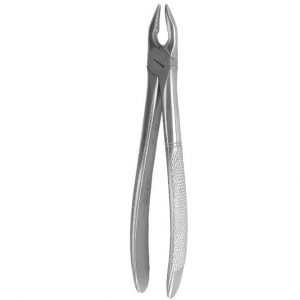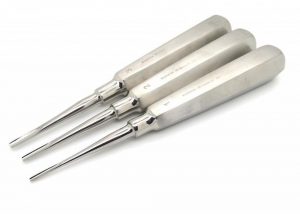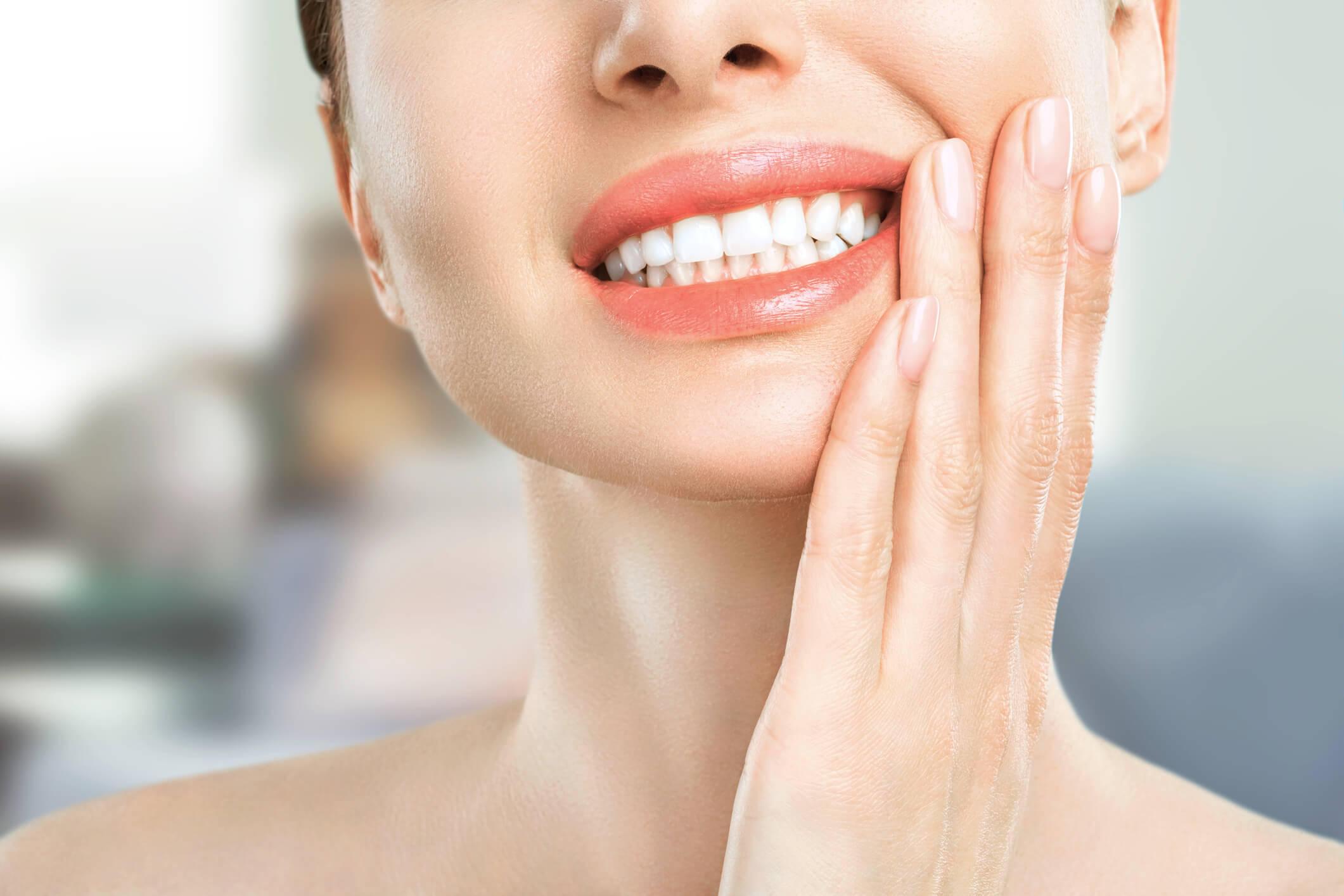https://www.instagram.com/p/CK2M0-bLsX9/
You may have loose teeth, rotting teeth or broken teeth but you feel no pain. Why can’t you just leave them there?
Our modern-day approach to dentistry is very different now due to advances in education and technology. Where once it was common to extract teeth and provide dentures it is now the opposite. Your dental professional tries to be as conservative as possible for our patients – prolonging the life of your teeth is the goal.
Although keeping your teeth is a priority there are many reasons when removal of the teeth is more beneficial for you as a patient. Sometimes the tooth is naturally replaced by another tooth such as in a growing child. Other times the tooth may have decayed extensively and can no longer be restored and so requires removal before infection sets in.
In this article we’ll outline the different types of extractions, how they are done and the reasons why.
Types of dental extraction
Simple extraction
-
- Simple extraction refers to a method where the tooth is removed with instruments such as an elevator or forceps. Note that the patient is either anaesthetised(temporary numbness) or sedated so that there is no pain. We’ll discuss this later in this article. An elevator is a simple lever used by placing it between the tooth and bone then applying gentle rocking motion. Forceps are placed on the tooth itself and removes the tooth by using a gentle rocking motion. Note that modern well trained dentists are all about being gentle and providing you the patient with the utmost respect and care.
- Simple extractions are the most conservative and have fast healing times of 1-2 weeks. Expect some soreness and swelling as your body heals.


Sectional extraction
-
- Sectional extractions are those which require the partial or complete cutting of the tooth itself. One of the reasons for sectioning a tooth is heavy decay which can make the tooth too weak to be held by forceps. Often they will have multiple roots and so the tooth is carefully sectioned to allow for each root to be removed individually. This has the benefit of ease and also preventing surgical extraction. Sectional removal of a tooth will often have the same healing time as a simple extraction.
Surgical extraction
-
- Surgical extraction is required when a tooth cannot be removed simply or by sectioning the tooth. This can occur when the tooth is covered by too much of the jaw bone such is often the case with wisdom teeth. Other times the tooth may have a long curved root or the bone is very hard and the tooth cannot be removed. In these cases careful removal of some of the bone is required. When enough of the bone is removed the tooth can then simply be removed or removed by sectioning.
- Surgical removal can have slightly longer healing times of 1-3 weeks and require sutures.
- The careful removal of bone is rarely a problem as bone will regrow over several months.
Settings for dental extractions
Local anaesthetic
Local anaesthetic is used every day in dentistry and is very safe. Before the local anaesthetic is given numbing gel is applied to the injection area. This is left for a minute to absorb before the injection is given. While injecting the local anaesthetic care is given to be as slow as possible so as to reduce any discomfort. The anaesthetic will last for several short hours during which time simple, sectional or surgical extractions can be completed.
Loal anaesthetic with happy gas or sedative medication
For patients who feel anxious happy gas can be given to patients. This is inhaled through a nose piece and works very well in reducing anxiety. Other forms of anxiety relievers can be pre-medication taken before the appointment or the “green whistle” a device which allows the patient to breathe in an aerosol similar to the happy gas. Local anaesthetic can then be given and the simple, sectional or surgical extraction can be completed.
Sleep dentistry
This has now become extremely popular and for good reasons. A qualified anaesthetist can sedate you and treatment can be done in the dental chair. During this time you will be in a deep sleep. Afterwards you will remember very little. Your carer will take you home after the appointment. Sleep dentistry can be done for many other procedures including fillings, crowns and implant placement.
General anaesthetic
This is done in the hospital setting. You are completely sedated deeper than that of “sleep dentistry”. This is suitable for wisdom teeth removal or surgeries.
Reasons for tooth removal
Removal of deciduous tooth
Children from the approximate age of 2yrs will have 20 deciduous teeth which are otherwise known as baby teeth. All these teeth will progressively start to be replaced by the age of 6-13yrs old. The adult teeth forms in the jaw under the baby teeth. As the adult tooth matures it moves up and gradually pushes the baby tooth out. Often times the baby teeth may be tightly packed together and the adult tooth cannot move out. In these cases we’ll usually take a dental x-ray to confirm that this is indeed occurring. If it is then removal of the baby tooth may be best so that the adult tooth can take its position. Consequences of not doing so can lead to bigger problems later on like crowding of the teeth which requires further treatment like orthodontics.
Removal of tooth for orthodontics
Orthodontics involves moving the teeth using braces or clear aligners so as to straighten the teeth. Sometimes the size and number of teeth is too great for the jaw to accommodate and so in order to create space extraction of selected teeth are required. Most often these are the premolar teeth – the fourth or fifth teeth when counting back from the front center teeth.
Removal of wisdom teeth
Wisdom teeth are usually the eighth teeth when counting back from the front center teeth. These do not always need to be removed often times being left in position and monitored. When the wisdom teeth start to cause pain or infection then it may be best to have them removed otherwise they can be a continual problem throughout life.
Removal of extra teeth
Many people can have extra teeth otherwise known as supernumary teeth. If they do not cause a problem then they can be left in place.
Removal of decayed teeth
If a tooth has decayed beyond repair then removal is advised. If a rotted tooth is left then it can become infected and unhealthy. Signs that a tooth may be infected include bad breath, pus, swelling, feeling unwell, bleeding to name a few. It is also important to note that rotting teeth often have no symptoms at all.
Removal of heavily restored teeth
Heavily restored teeth can be considered similar to the decayed tooth. If a tooth is heavily restored it can mean that the nerve inside the tooth has died. If this is the case then the nerve chamber needs to be cleaned and filled in a process called root canal therapy or the tooth needs to be removed. Leaving a heavily restored tooth with a dead nerve in place can lead to serious infection.
Removal of teeth for radiation therapy
Patients requiring serious medical treatments may need radiotherapy to the head and neck. This can affect the salivary glands and capacity for the bone to heal in this area. The significance of the salivary glands being damaged by radiotherapy is the loss of saliva production – our own natural ability to wash away acid build up in the mouth. Patients with low saliva flow are at a much higher risk of dental decay. In these cases the dentist will speak with you doctor in regards to whether or not teeth need to be removed.
Removal of teeth for dentures or dental implants
A failing dentition is one where multiple teeth are decaying. It can also involve teeth with severe mobility due to gum disease. A discussion is made with the patient as to whether it is better to try to keep the teeth or have them removed and replaced with dentures or implants. This can be a difficult decision as the cost and time required to keep the teeth may not be beneficial to the patient long term. In these cases dentures or dental implants may be a better option.
Removal of teeth for medical reasons
Patients who have serious medical conditions may need to have their teeth removed. Your doctor will discuss with your dentist the options and with your help weigh up the benefits and disadvantages of keeping or removing your teeth. Some examples may include conditions where the immune system is so compromised that any dental infection can be life threatening. Other risk factors are patients on bone modifying drugs(bisphosphonates), dry mouth, immunocompromised patients.
Patient’s who have a cyst or tumor in the jaw can also have nearby teeth removed
Removal of teeth to prevent spread of infection(gum disease)
Patients with severe gum disease may need to have their teeth removed. A common condition is periodontal disease. A hereditary and lifestyle disease which affects the supporting structures of the teeth including the gums and bone. Patients can have bleeding gums, swollen gums, loose teeth and infections. If the tooth becomes too mobile it can start to cause pain and infection so extraction advised.
The decision to remove a single tooth is not taken lightly. Once the benefit in removing the tooth outweighs keeping it there are many different settings and techniques which can be applied. Your safety and comfort is always a priority in a modern day dental practice.
Further questions or concerns?
We are here to help so feel free to call and schedule an appointment with us today and get back to owning a confident smile!

